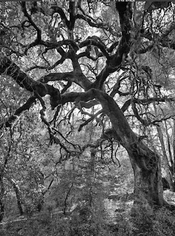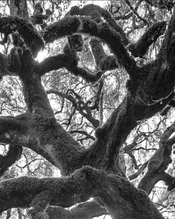Alan - I have no means of telling over the web what a specific neg or print looks like in any nuanced sense, or even what the real lighting was like. All I can comment is that if you want silhouettes, expose and develop for that effect. If you want to have perceptible shadows gradation, expose and develop for that instead. Or if you don't really know which you want, go with the latter strategy for sake of a versatile negative. One can always print bolder or more contrasty; but you can't add detail or texture that isn't captured on the negative to begin with. Yes, this also requires sensitivity to the quality of light on hand, and a distinct amount of experience in shooting and printing too. But I find this cat and mouse game with high contras lighting a lot of fun, and get some very nice prints too.
Sheet film is the most versatile because you can easily segregate different sheets for sake of separate levels of development. With roll film, one either needs an extra back or two (if your camera even used detachable backs), or else you develop for the preponderance of images on that particular roll. Still, with practice and the right film, long contrast scale scenes are no problem for me with either kind of equipment. But a real handheld spotmeter does help, For those who say, "simply bracket", OK; but light can shift quickly, and if one has looked at the price of 8x10 sheet film these days, or the weight of a lot of extra holders, they might think twice. If one has a machine-gunner mentality, a big view camera can be an excellent cure.













